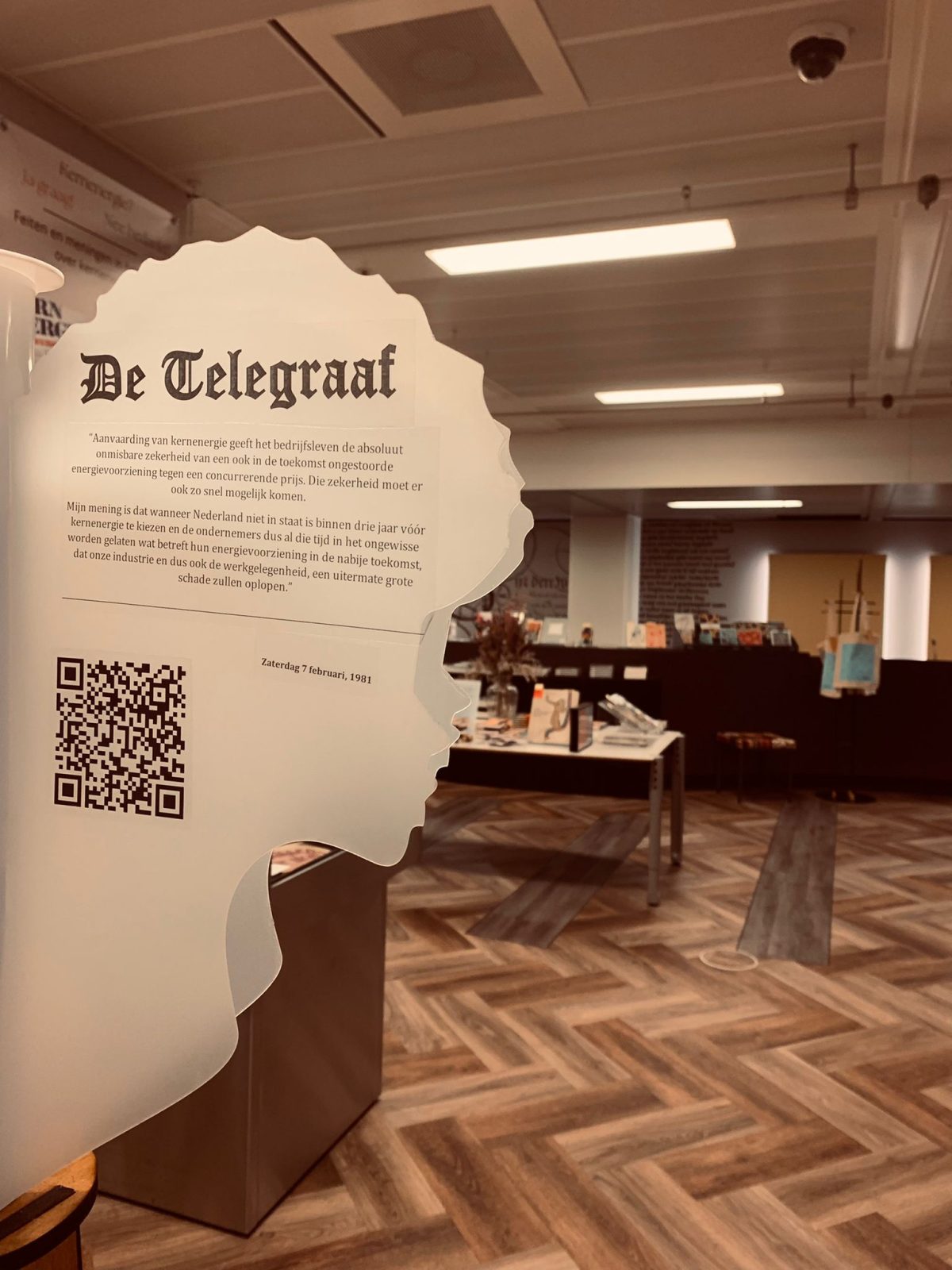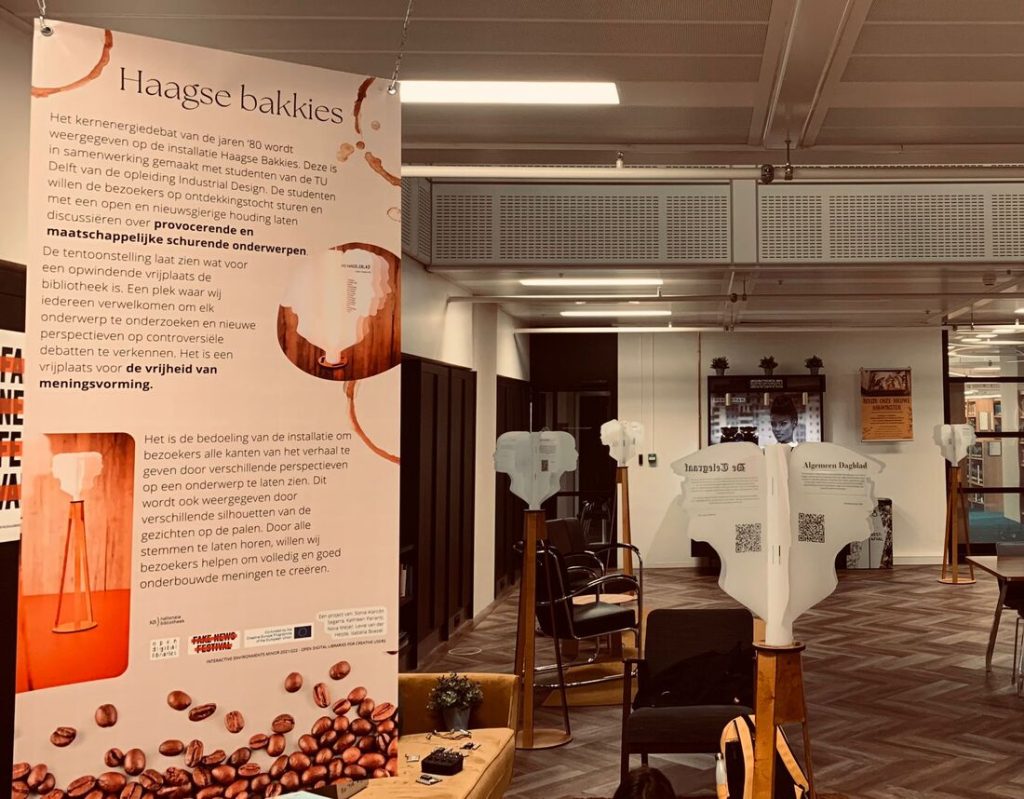
Haagse Bakkies (Hague less than half filled cup of coffee) is another installation by the Open Digital Libraries under the name «user centered work spaces». This time curated by Huibert Crijns, Dirk Huijsmans and Jessica Wevers of KB National Library.
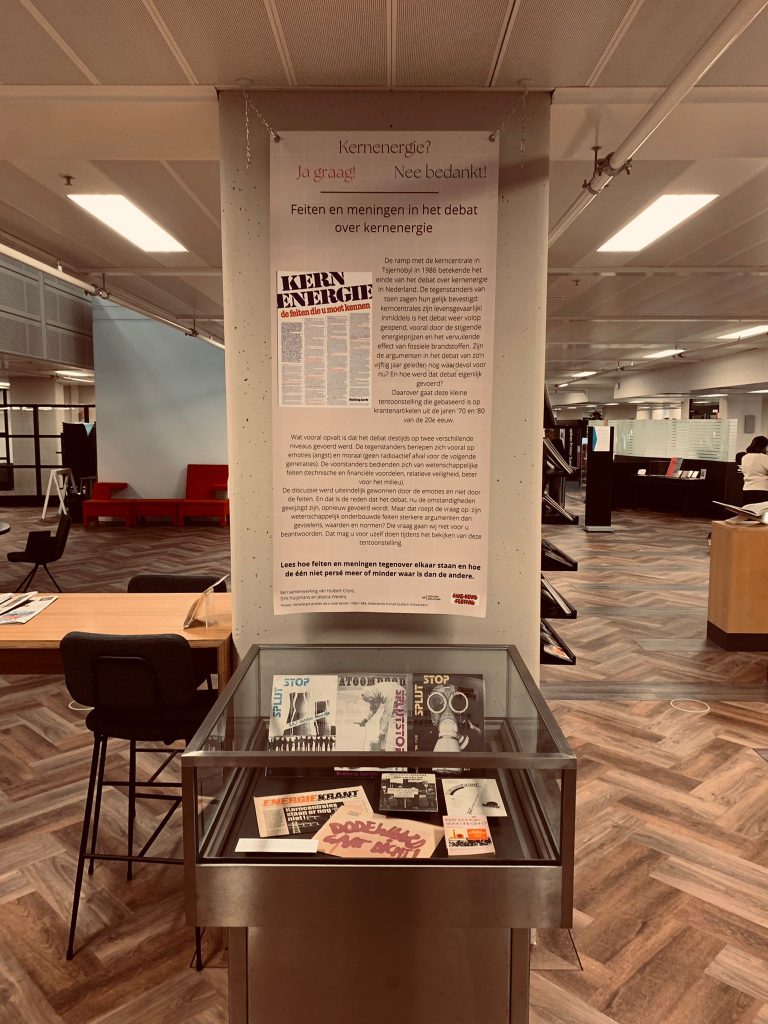
The nuclear energy debate of the 1980s is depicted on the Haagse Bakkies installation. This was made in collaboration with the students of the Industrial Design program at the Technical University of Delft. They used the rich digital newspaper collection in Delpher as a source for the content of the exhibition. The students thus send visitors on a journey of discovery and ensure that they discuss provocative and social topics with an open and curious attitude.
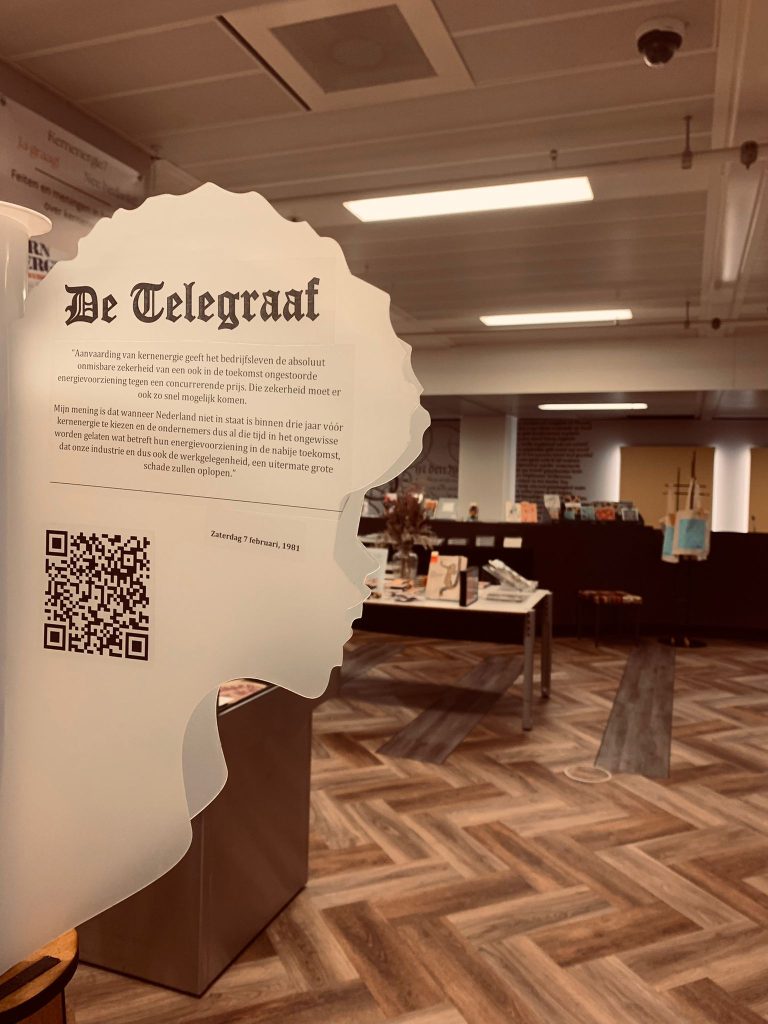
The exhibition shows what an exciting sanctuary the library is. A place where everyone is welcome to research any topic and explore new perspectives on controversial debates. The library is a haven for freedom of expression.
The intention of the installation is to give visitors all sides of the story by showing different perspectives on a subject. This is also represented by the different silhouettes of the heads on the posts. By making all voices heard, the visitor is helped to create a complete and well-founded opinion.
The expo can be visited in November and December 2022 at KB, national library of the Netherlands.
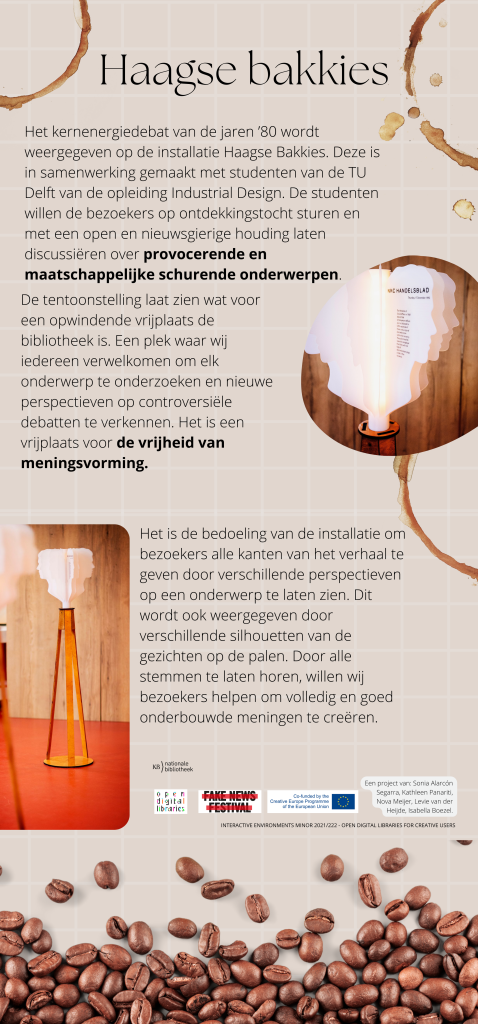
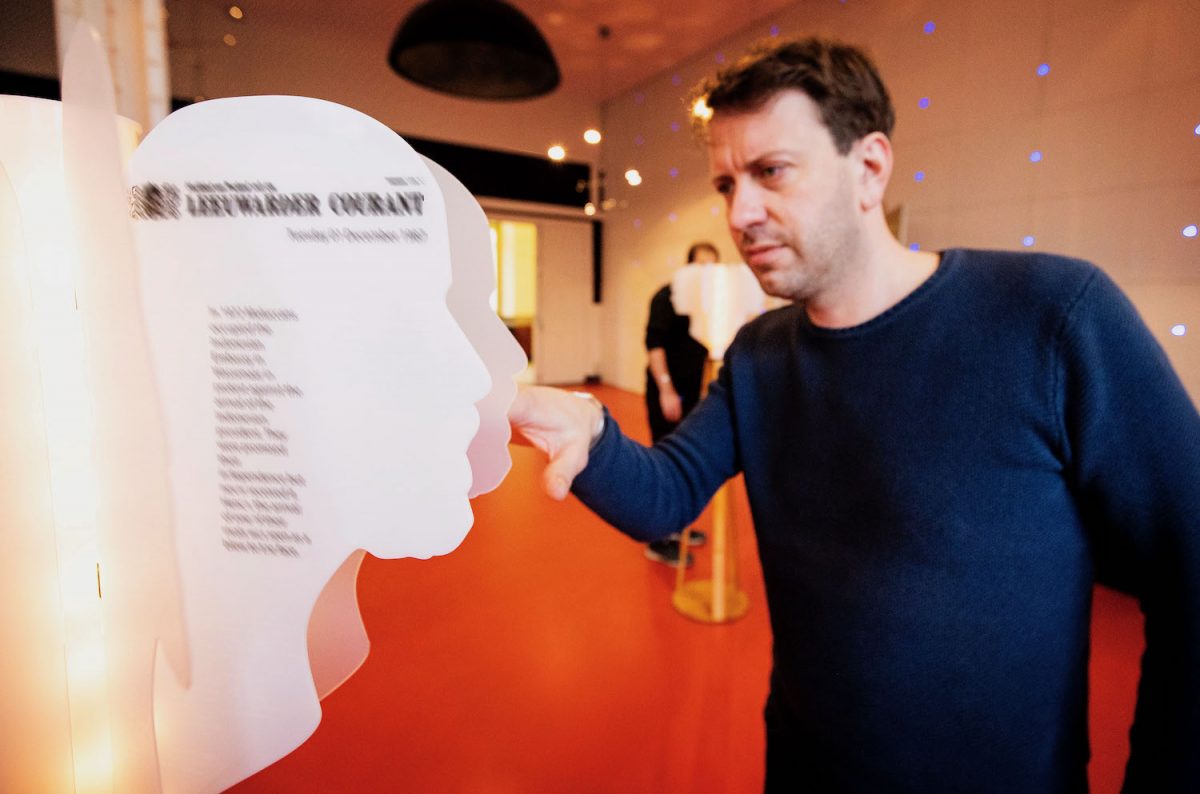
The «Haagse Bakjes» concept exposes a fundamental role of the library. That of being a neutral space where all opinions and viewpoints are archived, but readily available. Situated near the coffee machine the concept highlights one topic, but offers an environment of perspectives for reading and discussing while people enjoy a coffee break.
Student team: Isabella Boezel, Kathleen Panariti, Levie van der Heijde, Nova Meijer, Sonia Alarcon Segarra
In the 2021-2022 edition of the Interactive Environments minor they collaborated with the KB National Library to develop 5 concepts as an answer to the following design brief. Traditionally, libraries are strongholds for people who enjoy consuming tangible content. However nowadays, more and more content is being published digitally and analogue collections are being digitalised. And thus, the question arises: how can libraries adapt and thrive in the future, while also bridging the gap between their physical and digital collections and spaces?
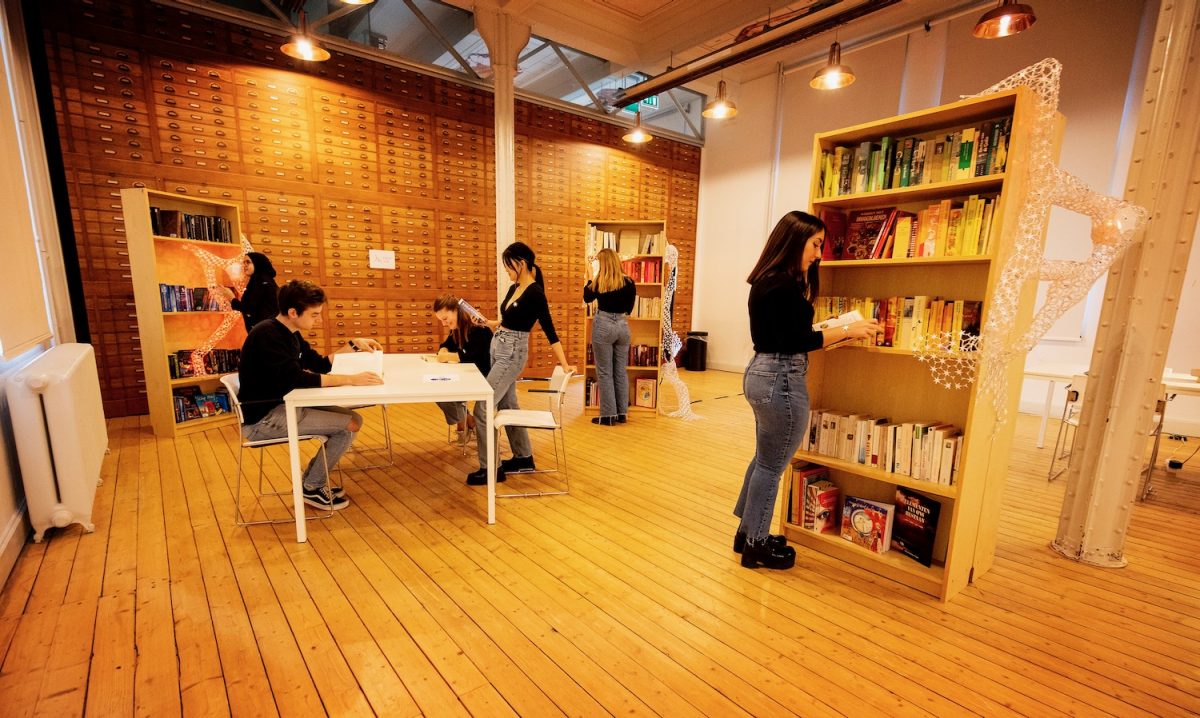
The «Roots» concept envisions that the digital collection actually overgrows the physical books and furniture in the library. A library visitor can easily bump into data from the growing digital collection and become inspired in the same way as if they were browsing the physical versions of the books.
Student team: Agnes Lee, Anna Belenguer Martí, Lonneke Visser, Meryem Maskouri, Nathan Douenburg, Pien Adank
In the 2021-2022 edition of the Interactive Environments minor they collaborated with the KB National Library to develop 5 concepts as an answer to the following design brief.
Traditionally, libraries are strongholds for people who enjoy consuming tangible content. However nowadays, more and more content is being published digitally and analogue collections are being digitalised. And thus, the question arises: how can libraries adapt and thrive in the future, while also bridging the gap between their physical and digital collections and spaces?
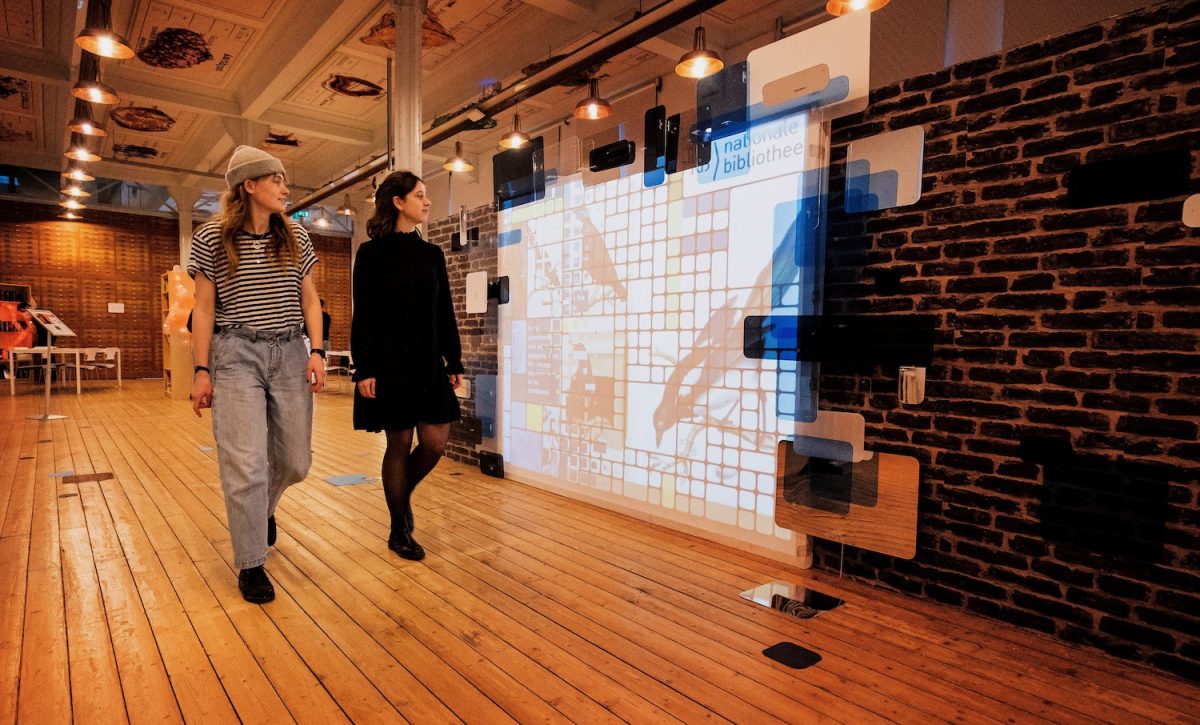
The Reflect concept envisions the facade of the library building to attract people passing by through light and sound. Once the attention is caught visitors can interact and investigate data from the digital collection by moving their body.
Student team: Blanca Martin Fernández, Eva Le Navenec, Flore Paumen, Juliët Wagemakers, Thomas Sjerps, Lin Zhou
Interactive Environments minor edition 2021-2022
In the 2021-2022 edition of the Interactive Environments minor they collaborated with the KB National Library to develop 5 concepts as an answer to the following design brief.
Traditionally, libraries are strongholds for people who enjoy consuming tangible content. However nowadays, more and more content is being published digitally and analogue collections are being digitalised. And thus, the question arises: how can libraries adapt and thrive in the future, while also bridging the gap between their physical and digital collections and spaces?
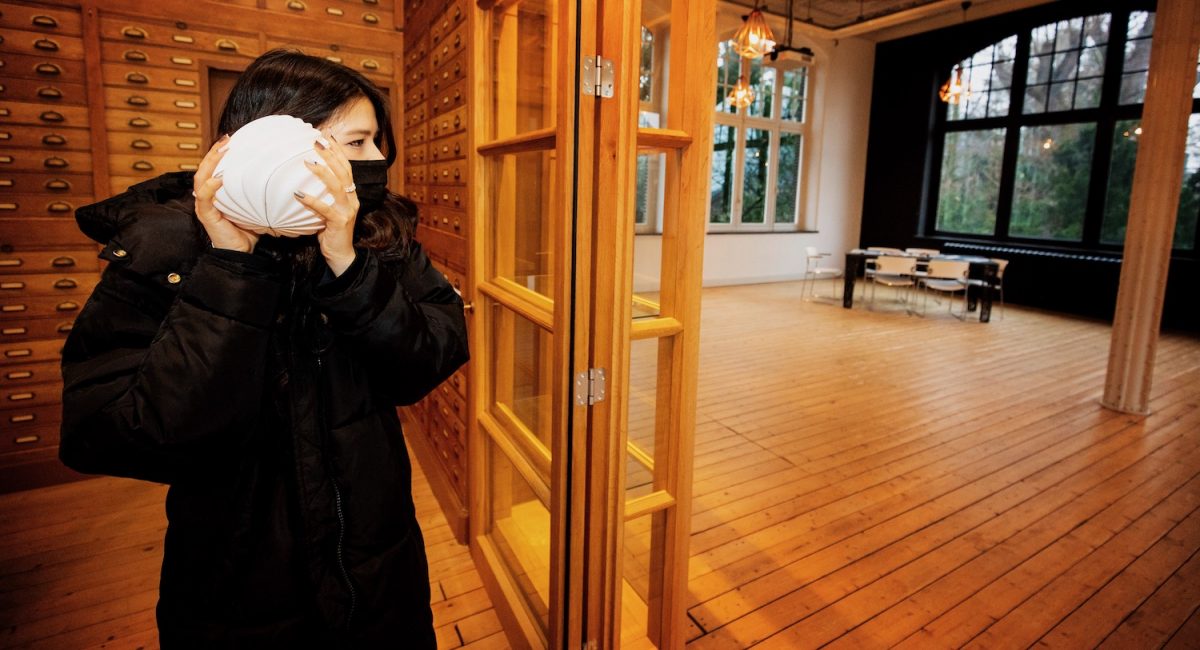
The MEMO concept aims to attract interest for the library through examples. A visitor can pick up an audio playback shell at the entrance and walk through the library tuning in to several stories as told by the voices of another visitor. The stories relate to personal experiences with the library.
Student team: Isa van Gameren, Katarina Pinto, Loïs Epskamp, Nadyne Aretz, Shiva Aghaei, Sijmen de Vries
Interactive Environments Minor 2021/2022
In the 2021-2022 edition of the Interactive Environments minor they collaborated with the KB National Library to develop 5 concepts as an answer to the following design brief. Traditionally, libraries are strongholds for people who enjoy consuming tangible content. However nowadays, more and more content is being published digitally and analogue collections are being digitalised. And thus, the question arises: how can libraries adapt and thrive in the future, while also bridging the gap between their physical and digital collections and spaces?
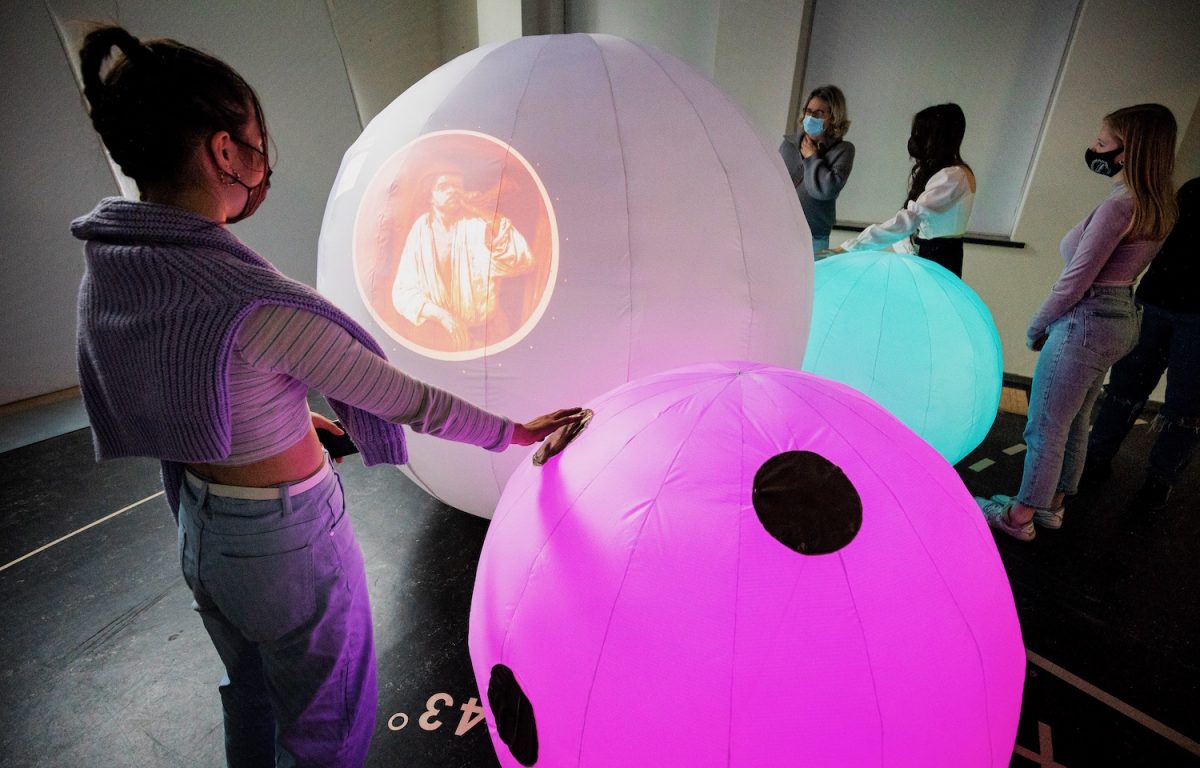
The KY-O-MI concept makes it possible for the library to expose their digital collection at a satellite location. For example, at the train station or during an event at a university. The inflatable installation creates two access point to the digital collection of the library to allow data exploration in a social setting.
Student team: Dorrit Huijskes, Eva Jonkers, Gloria Orcan, Kenwyn Hoefnagel, Loes de Vries, Vivian Nguyen
Interactive Environments minor edition 2021-2022
In the 2021-2022 edition of the Interactive Environments minor they collaborated with the KB National Library to develop 5 concepts as an answer to the following design brief. Traditionally, libraries are strongholds for people who enjoy consuming tangible content. However nowadays, more and more content is being published digitally and analogue collections are being digitalised. And thus, the question arises: how can libraries adapt and thrive in the future, while also bridging the gap between their physical and digital collections and spaces?
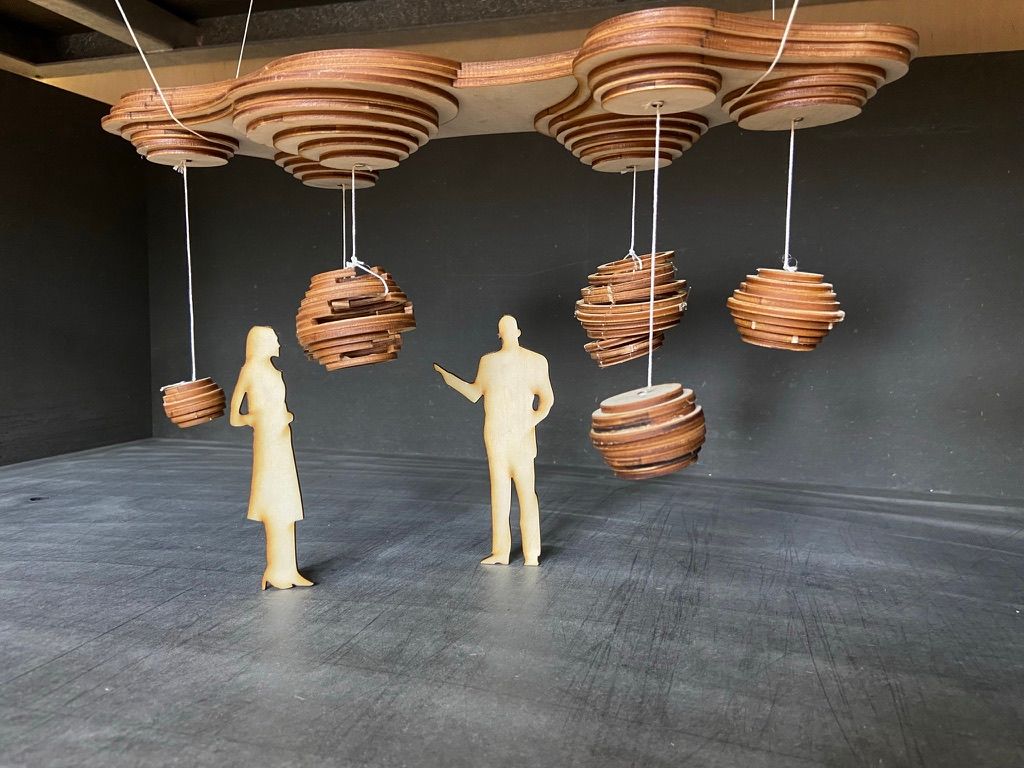
A collaboration between KB, the national library of the Netherlands and TU Delft.
Our libraries are cultural jewels which serve as homes for the works of artists and creators, poets and illustrators. Vast archives of analog works are being migrated to electronic formats. In the digital era – now and in the future – these works spill outside of individual library buildings into public spaces and peoples’ homes. Yet, we still need libraries to be able to view the works in their original format, experience them with all our senses, find a moment of peace away from the bustle of our rushed lives, perhaps encounter other like-minded people, and exchange our knowledge and
inspirations. All this can be facilitated by some form of a “living” interactive environment. We can imagine a library, which grows around its collection, augments and enhances the way people browse and experience collection items, and fosters meaningful interactions among the library visitors and the collection.
In this collaboration between the KB national library of the Netherlands and the TU Delft minor Interactive Environments students will work together to get to know our library collections and let them interact with visitors, students, passersby and all who our interested through interactive installations. They will visit the KB site, get the feel of the building and it’s surroundings and find new ways to incorporate the environment in the interaction between collection and (possible) users.

